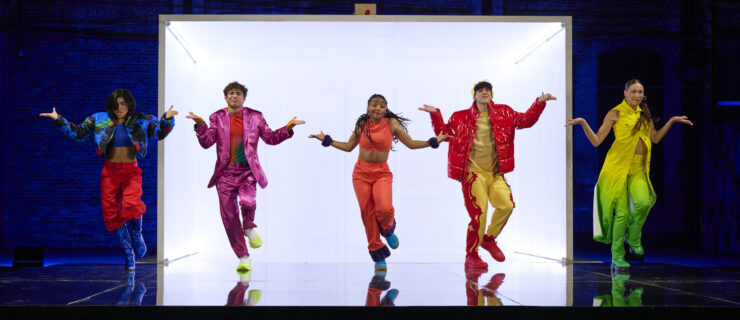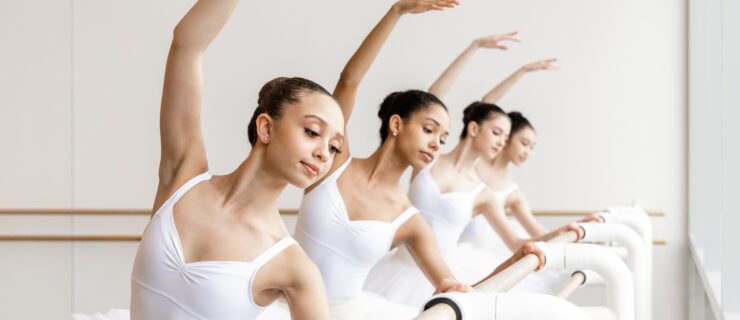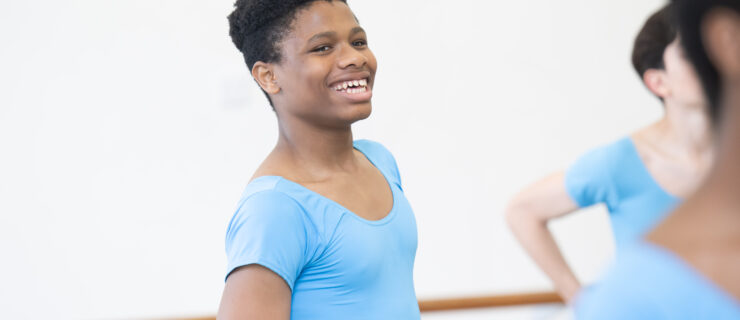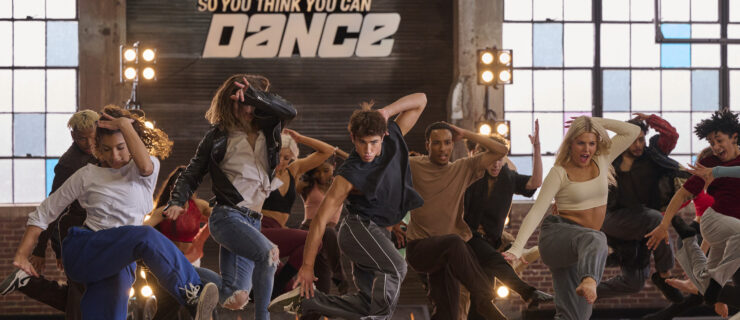Young Choreographers, Young Love, and A Few New Works
It was packed weekend of dance performances, so let’s cut to the chase.
Saturday afternoon, Dance Theater Workshop hosted “Dances by Very Young Choreographers,” which is precisely what it sounds like. Guided by teacher Ellen Robbins, young dancers (who ranged in age from what looked like about 7 to 17) performed works of their own invention. The performance was remarkable not only for the variety of styles and ideas presented, but also because these young dancemakers were so at ease on stage.
One very young girl danced a very funny piece about looking for a doll that had been taken from her. She inhabited her character fully and filled the space between steps with emotion. Another choreographer in her teens danced with a folding chair; while the piece was less narrative, the girl found ways to inject personality and again, humor, all while exploring the movement possibilities of her prop. All the choreographers showed creativity, independence, and confidence—a great accomplishment.
Only a few hours later, Kathryn Morgan and Robbie Fairchild (a last-minute substitute for Sean Suozzi) took the stage in the New York City Ballet’s rendition of “Romeo and Juliet.” While everyone knows the story ends in tragedy, the journey there was pure adolescent joy. Elegant to the tips of her fingers, Morgan conveyed Juliet’s blithe innocence. And who wouldn’t fall head over heels for Fairchild? With his movie-star good looks and buoyant movement style, he and Morgan perfectly captured the whirlwind quality of the star-crossed lovers. And their portrayals were enhanced by Peter Martins’ choreography, particularly the Capulet’s ball and balcony scene pas de deux, in which Morgan and Fairchild often seemed to be simultaneously pulling toward and away from each other, as though swept away by the force of their attraction.
Finally, Sunday evening at the Joyce Theater, the NYC-based modern dance company, Rioult, presented four pieces, including two world premieres. All of the pieces were created by the company’s artistic director and choreographer, Pascal Rioult. The program began with “Harvest” a depiction of rural life à la Little House on the Prairie—but for a more mature audience. Next up was “Shadow Box,” a quartet performed to live music care of pianist Hsiang Tu. The piece, one of the premieres, also featured virtual images of the dancers projected onto screens on the stage. The other world premiere, “City,” followed and again featured Tu this time accompanied by violinist Shih-Kai Lin. The choreography here was more lively, though the video images of vertiginous city buildings were occasionally more distracting than effective.
The night concluded with the most coherent choreographic endeavor, “Bolero,” set to Maurice Ravel’s well-known music of the same name. The program note explained Rioult’s approach: “Ravel challenged himself to repeat as little material as possible as many times as he could without losing the audience’s interest. This is exactly what Rioult decided to do with his version, which creates a machine-like dance that explores the duality of constant rhythm and sensuality of ‘Bolero’ while bringing it to a riveting crescendo.”
Mirroring the repetitive thrum of Ravel’s score, the company of dancers moved in unison, their arms chopping and slicing the air while holding a 90 degree bend. One by one, soloists took the melody, reaching their limbs in slow and sinueous extensions. The choreography was a visual representation of the music that made the familiar seem new again.



